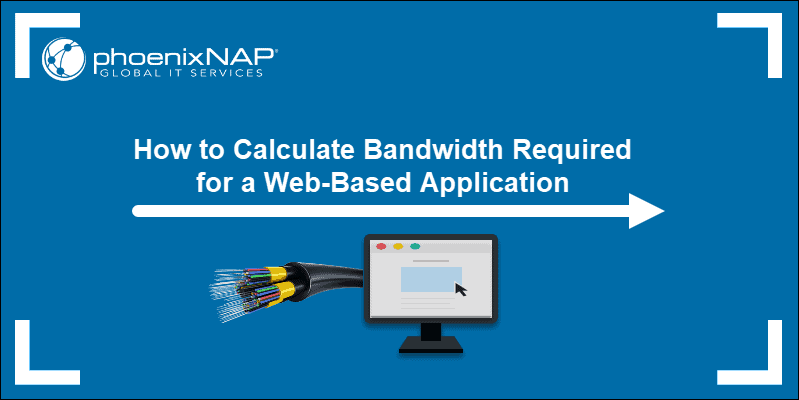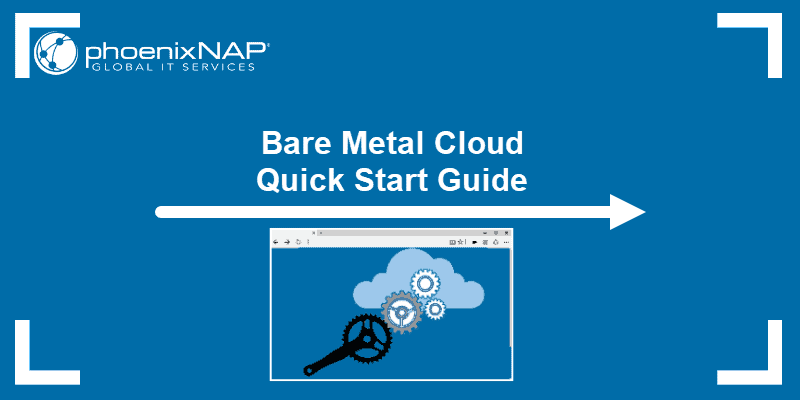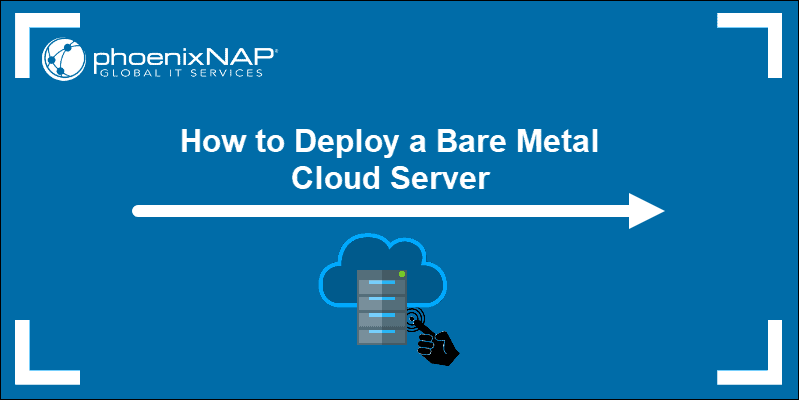Introduction
One of the key factors to consider when developing a website or a web-based application is the bandwidth your set up will need to run correctly.
Knowing your bandwidth requirements helps you choose the right hosting provider and plan to suit your needs.
In this tutorial, we will show you how to calculate the bandwidth required for your website or web-based application.

What Is Bandwidth?
Bandwidth represents the maximum capacity of data that can be transferred over a network in one second. The smallest unit of measure is expressed in bits per second. With the advancement of technology, ISPs now use megabits per second (Mbps), or gigabits per second (Gbps).
Bandwidth is a term that describes the amount of traffic between your website and users via the Internet. Do not confuse bandwidth with the connection speed as they are not the same.

Bandwidth vs. Data Transfer
The term bandwidth is sometimes used interchangeably with data transfer. These are, in fact, two very different things.
Bandwidth determines the maximum potential amount of data you can transfer per unit of time between your website and users. This term does not represent the actual data you transfer, but the theoretical data amount you can process in one second.
On the other hand, data transfer refers to the actual total amount of data you transfer during a period, usually a month. The units of measurement are kilobytes (KB), megabytes (MB), gigabytes (GB), and for large applications, terabytes (TB).

The Importance of Bandwidth
Calculating the right amount of bandwidth for your web-based application is crucial during the development phase and to ensure the performance is stable. Make sure to factor in sudden spikes in traffic. A good rule is to go 50% above your projected bandwidth needs.
However, when choosing a web host, the calculation may seem unnecessary since most hosting providers offer “unlimited” bandwidth plans.
Note: Your system may expand over time, and bandwidth requirements may increase. Therefore, choose a scalable plan to allow for bandwidth changes when necessary.
What is Unlimited Bandwidth
Many providers advertise “unlimited” bandwidth plans. This wording implies that you can transfer as much data as you need. Here, a web host offers a flat rate that simplifies the purchase and the search for a hosting solution.
The truth is, however, that it is impossible for hosting companies to offer truly unlimited bandwidth. The costs and technological requirements would be too high to do so.
Because of this, unlimited bandwidth plans offer enough bandwidth to cover most clients’ needs. Therefore, the plans appear to be unlimited for these users. In the majority of cases, regular plans cover standard web-app requirements. There are also plans for more advanced clients, providing speed beyond what regular unlimited plans offer.
Note: In order to successfully manage traffic surges and enable horizontal scaling of a website, consider deploying WordPress on Kubernetes.
Calculating Bandwidth Requirements
Before you calculate your bandwidth requirements, you must know the average page size on your website.
To determine the size, use a load time test and take into account the data for at least ten pages. Then, calculate the average page size for your website.
With this piece of information, you need to factor in two more elements:
- The number of visits to your pages.
- Extra bandwidth you might need in case of a traffic spike. This prevents potential performance issues or even downtimes.
There are two formulas for calculating the necessary bandwidth.
Note: Reducing page size is an important factor in delivering faster load times. To learn how to reduce page size and speed up your WP website, check out our comprehensive guide 25 Performance and Optimization Tips on How To Speed Up WordPress.
Website Bandwidth Requirements Without User Downloads
When your website does not offer downloadable content to visitors, use the following formula to calculate the required bandwidth:
Bandwidth = Average Page Size x Average Page Views x Average Daily Visitors x 30 x RedundancyTo break down the formula:
- Average Page Size – This part is the average size of your webpage.
- Average Page Views – Represents the average number of page views per visitor.
- Average Daily Visitors – The average number of monthly visitors.
- 30 – represents the days in a month.
- Redundancy – A safety factor for preventing traffic spikes. The range is from 1.3 to 1.8.
The calculation is a bit different when your website offers downloadable content.
Website Bandwidth Requirements With User Downloads
To calculate the required bandwidth when your website offers downloadable content, use the following formula:
Bandwidth = [(Average Page Size x Average Page Views x Average Daily Visitors) + (Average Download Per Day x Average File Size)] x 30 x RedundancyNew parameters in this formula are:
- Average Download Per Day – Represents the average number of downloaded files per day.
- Average File Size – This is the average size of downloadable files.
With this calculation, you know the projected bandwidth requirements with user downloads.
Conclusion
After following this tutorial, you should know how to calculate the bandwidth required to run your website or web-based application smoothly and without downtime.
Make sure you use the right equation for your website to get the correct results.


